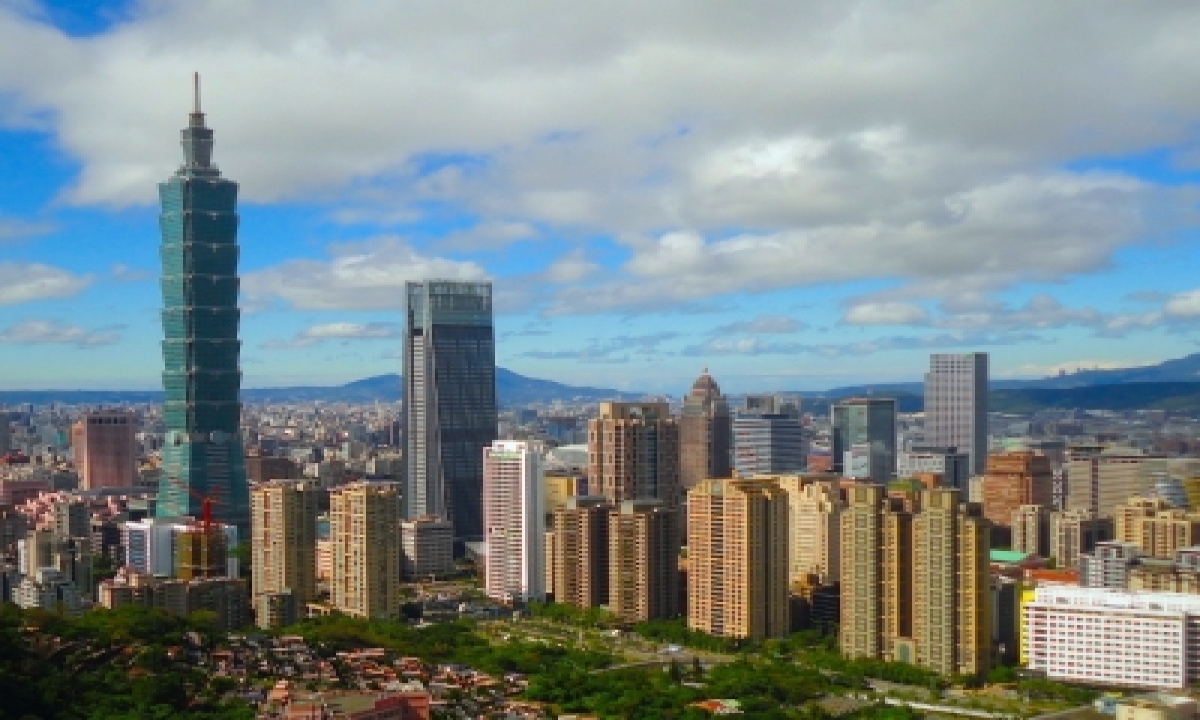By Atul AnejaNew Delhi, Oct 23 Taken aback by the high-octane riposte to its muscle flexing in the Indo-Pacific, including Taiwan, especially by India and the United States, Chinas propaganda machinery has now gone into overdrive.
“The Taiwan question is not a card that India can exploit as a bargaining chip toward China over the border issue,” wrote the state-run tabloid Global Times, following a media report that New Delhi and Taipei were considering elevating their trade ties.
“If India plays the Taiwan card, it should be aware that China can also play the Indian separatist card,” the daily warned, nailing “separatist forces in Northeast Indian states such as Tripura, Meghalaya, Mizoram, Manipur, Assam and Nagaland” as candidates meriting Beijing’s support.
The Chinese Foreign Ministry has also waved its finger at the US, exhorting Washington not to violate the One China principle and refrain from selling weapons to Taiwan.
There are at least three key reasons behind China’s near-hysterical response.
First, Taiwan is central to China’s geopolitical ambition of becoming a leading world power.
Once Taiwan is fully integrated with the mainland, it would allow China to base its nuclear submarines in its deep-water ports, allowing them undetected access to the wider Pacific Ocean, turning the Chinese navy into an authentic blue water force.
But in case China is denied permanent access to Taiwan, fortified by US support as an independent state, it would suffer a strategic knockout.
Denial of Taiwanese deep-water ports would mean that the Chinese navy would remain boxed in within the three island chains constructed by the US and its allies since the start of the Cold War.
Historically, the emergence of the People’s Republic of China (PRC) in 1949 and the onset of the Cold War led John Foster Dulles, a former US secretary of state, to develop the “island chain strategy” of besieging China and the former Soviet Union from the sea.
Dulles’s doctrine, aired during the heat of the Korean War in the early 1950s, had three layers.Of the three island chains, the “first island chain” was the most important.
The lengthy network starts from Kamchatka peninsula in Russia’s Far East and weaves its way into Japan.
Then, from the southernmost part of the Japanese mainland, it passes through Okinawa, a part of a larger Ryukyu island chain which ends with Taiwan.
From Taiwan, the “first island chain” heads towards the Philippines and the island of Borneo, before looping towards the tip of the Malay Peninsula.
After the collapse of the Soviet Union, the first island chain has begun to increasingly focus on China.
The supplementary Second Island Chain is located in the middle portion of the Pacific Ocean, and acts as Washington’s second defence line.
It is formed by: the Bonin islands—an archipelago of over 30 subtropical and tropical islands, some 1,000 kilometres south of Tokyo; and the Volcano islands—a group of three islands further to the south.The second island chain terminates in Guam, a key US military base in the Indo-Pacific.
The Third Island Chain—the final part of Dulles’ strategy—starts in the north with Aleutian Islands, most of them in Alaska and runs through the central Pacific to Oceania, which includes Australia, New Zealand and the vast cluster of islands in Micronesia, Polynesia and Melanesia.
Second, with its authority undermined, China would be on a “slippery slope” in case Taiwan becomes independent.Taiwanese independence will encourage similar moves, widening China’s territorial fault-lines along the Tibetan-Xinjiang axis.
An independent Taiwan is also likely to emerge as base for a determined soft-power push in Hong Kong and elsewhere, possibly awakening pro-democracy sentiments on the mainland itself.Already netizens in Taiwan, Hong Kong and Thailand are part of the pro-democracy Milk Tea alliance, symbolically connected by the mass popularity of the beverage in this region.
Third, Taiwan, known for its proven strengths in hi-tech and high-rise construction, can accelerate the process of economic de-coupling from China, which the Trump administration in the US has already flagged, following the Covid-19 pandemic.Last month, trade ministers of India, Australia and Japan declared their intent to road map new supply chains which exclude China.
Both Taiwan and the US would seamlessly fit into this ambitious initiative.
With India intent on reducing its reliance on China following the border standoff in Ladakh, Taiwan can significantly help in bridging the commercial and technology breach, resulting from souring New Delhi-Beijing ties.
Despite China’s fury over moves by India and the US to rework ties with Taiwan, neither New Delhi nor Washington, sensing a new and rare geopolitical opportunity following the Covid-19 pandemic, is expected to stare down Beijing’s threats.
In fact, India appears to have responded positively to Taiwan’s “new southbound policy,” which is looking at setting up large-scale production bases in India.“With the government’s New Southbound Policy, India is a good place for Taiwanese businesses to build production bases, given its democracy, ample human resources and strategically important location,” Taiwan’s Deputy Foreign Minister Tien Chung-kwang said last week as quoted by the Taipei Times website.
Resentment over China has been rising in India, not just because of a decades-long border conflict, but also because of China’s aggressive expansion in South Asia, its bullying of other countries and its dissemination of Covid-19, Tien said.“The wind is beginning to blow” in Indian society, he observed, pointing out that Taiwan’s success in containing the pandemic and medical aid, in sharp contrast with China, has not gone unnoticed in India.
With ties with China turning south following the border standoff in Ladakh, Indian elites are showing visible inclination to pivot towards Taiwan as a strategic source of hi-technology and investments.
India’s start-up ecosystem, smart agriculture, precision medicine, skills training and industrial automation offer great opportunities for collaboration are some of the areas of India-Taiwan collaboration, India’s representative to Taiwan Gourangalal Das said in Taipei.
In the US, the State Department on Wednesday cleared $1.8 billion in weapons sales to Taiwan and submitted the package to Congress for a final review in a move aimed at improving Taiwan’s self-defence capabilities against a long-threatened invasion by China, Bloomberg reported.
The package includes 135 extended-range standoff land-attack missiles worth $1 billion.Besides, the deal includes high-mobility artillery rocket systems as well as aircraft mounted surveillance and reconnaissance sensors.“The US government has long shrunk from selling Taiwan weapons that could strike PRC territory from Taiwan proper,” Ian Easton, senior director at Project 2049 Institute was quoted as saying.“These new missiles will hold major PLA [People’s Liberation Army] amphibious assault bases at risk and significantly complicate their offensive plans,” he observed.
The submission to Congress for a 30-day review, which is unlikely to draw opposition, follows US sales of 66 new model F-16 Block 70 aircraft to Taiwan, two months ago.
Separately, the House of Representatives on Tuesday proposed a Bill that requires the US military to maintain an adequate level of deterrence to prevent China from invading Taiwan.It also supports Taiwan’s participation in international organizations, the website of Taiwan News reported.
The Bill, titled the China Task Force Act, or CTF Act, could be passed before the current session of Congress expires on January 3, US lawmakers said.
(This content is being carried under an arrangement with indianarrative
.







